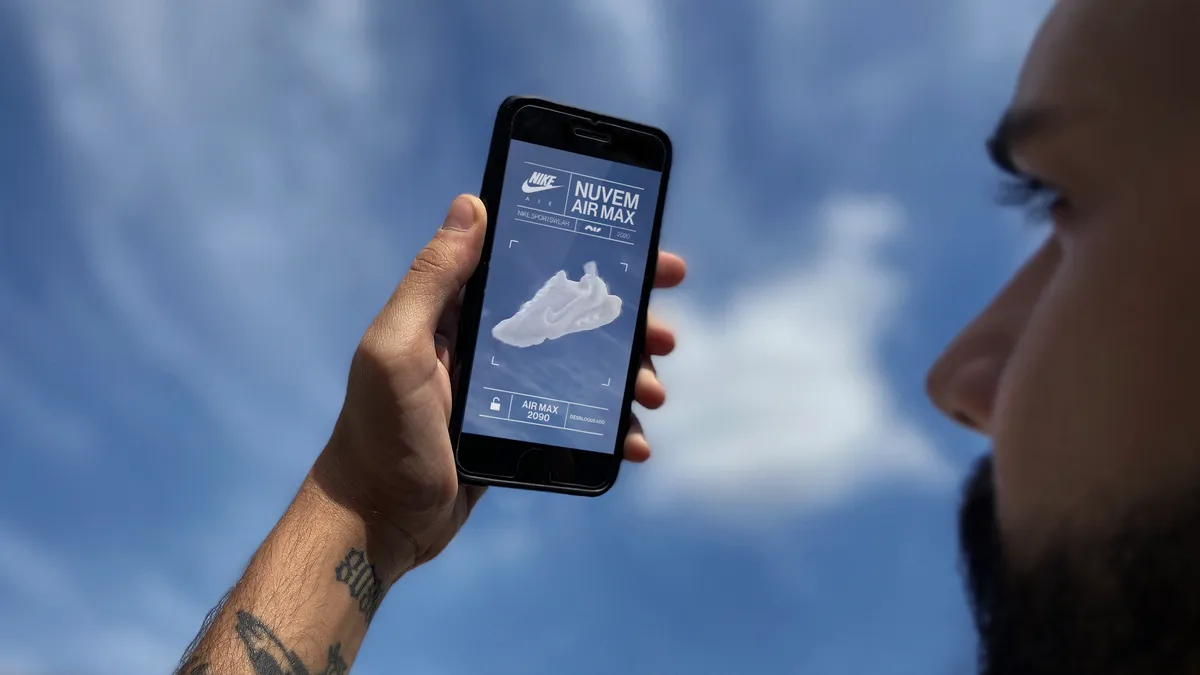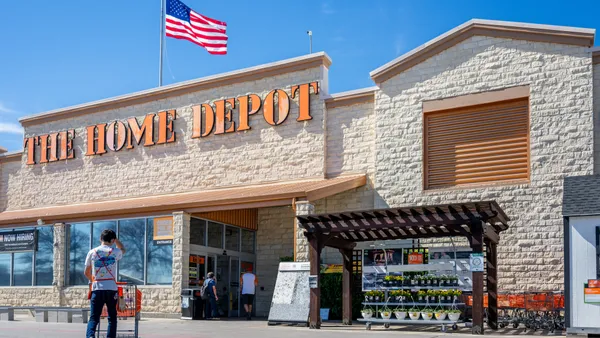Dive Brief:
-
Despite the pandemic and clogs at West Coast ports that bloated its inventory, Nike on Thursday reported a robust third quarter, with revenues up 3% year over year to $10.4 billion. Direct sales rose 20% to $4 billion, with digital sales up 59%.
-
The supply chain problems undermined sales in North America, where revenues fell 10%. Inventory was up 15% to $6.7 billion, "largely driven by higher in-transit inventory in North America due to U.S. port congestion and temporary store closures in [Europe, the Middle East and Africa]," the company said.
-
Nevertheless, net income rose 71% to $1.4 billion, as gross margin expanded by 130 basis points to 45.6%, according to a company press release.
Dive Insight:
Nike was tripped up by inventory snafus in the third quarter, when transit times were extended by more than three weeks, according to Chief Financial Officer Matthew Friend.
"The result was a lack of available supply, delayed shipments to wholesale partners and lower-than-expected quarterly revenue growth," he told analysts, according to a transcript from Motley Fool, adding that the company expects to recapture the delayed revenue in the current quarter.
Nike also expects gross margin to expand up to 75 basis points this year over last year, "reflecting the continued shifts we've seen to our more profitable NIKE Direct business," partially offset by higher logistics and freight costs and markdowns to liquidate the excess inventory abroad, he said.
Without the inventory troubles, North America revenues would have been more in line with investor expectations, according to Morgan Stanley analysts. "Further, profitability impressed," those analysts, led by Kimberly Greenberger, said in emailed comments.
The company also flourished in China, where revenue soared by 51%. And while the pandemic has presented challenges like store closures and overall uncertainty, Nike, like other athleticwear companies, benefited from consumers' tendency right now to wear comfortable clothes, according to GlobalData Retail Analyst Emily Salter. Nike was already emphasizing direct sales and boosting e-commerce, and all that also has come in handy lately.
"This is a smart strategic move that will benefit the brand in the long term as it gives it greater control over its brand image and connection to consumers," Salter said in emailed comments. "The brand’s strong digital proposition is essential to this DTC growth, with its highly competitive online offer featuring a slick website and free home delivery for NIKE members. NIKE is also smart to use digital channels to forge greater engagement with its shoppers, through its TRAINED podcast and array of fitness apps that will have surged in popularity during lockdowns."
The company's fortunes can't all be explained by consumer trends or these moves toward direct sales and digital channels, however. "NIKE also has its finger on the pulse in terms of being aware of consumer beliefs and has been able to position itself as a brand that cares about diversity, inclusion, and social justice," Salter also said, calling last year's maternity launch, a campaign that featured athletes Serena Williams and Shelly-Ann Fraser-Pryce, "a pioneering move in the sportswear market [that] has been met with widespread praise."
Jane Hali & Associates analyst Jessica Ramírez noted in a phone interview that Nike is a consistently formidable rival to Adidas, which has inked a partnership with Peloton that may not be quite enough to get it back into the game. "It's like Nike has a magic bag, you know, anything that the consumer thinks of or needs, they serve it up immediately," she said.
That comes down to not just savvy use of data, but also human creativity, according to Nike CEO John Donahoe, speaking to analysts. "The science [of] what we're doing, it's been done, it's doable," he said. "But the thing that makes this Company remarkable is the art. It's the creativity of our apparel designers, of our footwear designers, it's the creativity of our brand teams and the storytelling they do. And so, data doesn't displace art, it's both."
Nevertheless, the company has embarked on a series of some 700 corporate layoffs announced last year, up from previous plans for 500. Without specifying how many, the company confirmed new layoffs the same day it released its quarterly report, with the downsizing an effort to become a "flatter, nimbler company," The Oregonian reported Thursday.














